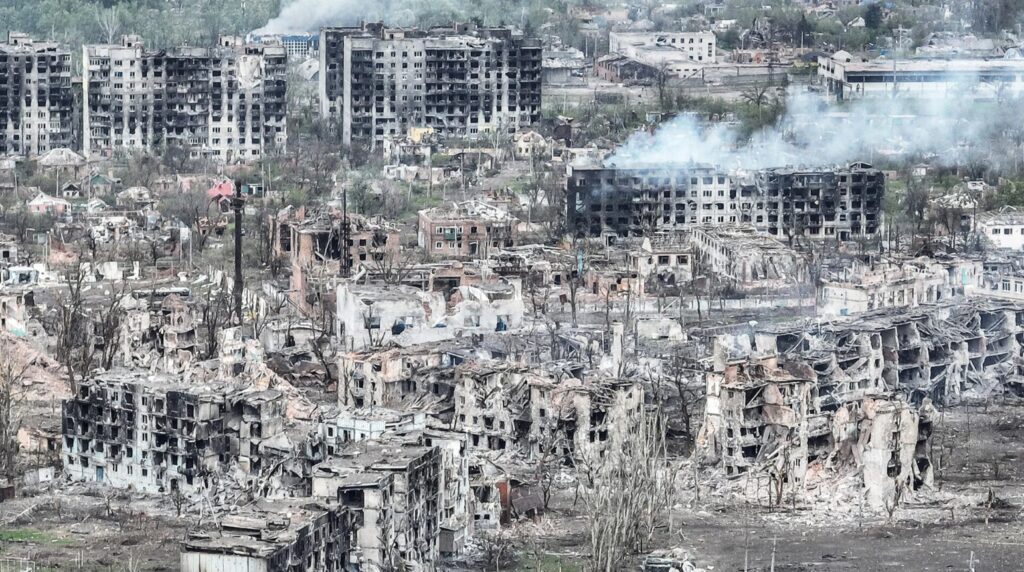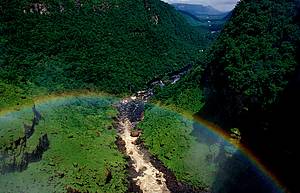‘Climate Smart’ World Within Reach, says World Bank

WASHINGTON, September 15, 2009 – Developing countries can shift to lower-carbon paths while promoting development and reducing poverty, but this depends on financial and technical assistance from high-income countries, says a new World Bank report released today. High-income countries also need to act quickly to reduce their carbon footprints and boost development of alternative energy sources to help tackle the problem of climate change.
World Development Report 2010: Development and Climate Change, released in advance of the December meetings on climate change in Copenhagen, says that advanced countries, which produced most of the greenhouse gas emissions of the past, must act to shape our climate future. If developed countries act now, a ‘climate-smart’ world is feasible, and the costs for getting there will be high but still manageable. A key way to do this is by ramping up funding for mitigation in developing countries, where most future growth in emissions will occur.
“The countries of the world must act now, act together and act differently on climate change,” said World Bank President Robert B. Zoellick. “Developing countries are disproportionately affected by climate change – a crisis that is not of their making and for which they are the least prepared. For that reason, an equitable deal in Copenhagen is vitally important.”
Countries need to act now because today’s decisions determine both the climate of tomorrow and the choices that shape the future. Countries need to act together because no one nation can take on the interconnected challenges posed by climate change, and global cooperation is needed to improve energy efficiencies and develop new technologies. Countries need to act differently, because we cannot plan for the future based on the climate of the past.
Developing countries will bear most of the costs of the damage from climate change. Many people in developing countries live in physically exposed locations and economically precarious conditions, and their financial and institutional capacity to adapt is limited, says the report. Already, policymakers in some developing countries note that an increasing amount of their development budget is being diverted to cope with weather-related emergencies.
At the same time, 1.6 billion people in the developing world lack access to electricity, the report notes. These developing countries—whose average per capita emissions are a fraction of those of high-income countries—need massive expansions in energy, transport, urban systems, and agricultural production. Increasing access to energy and other services using high-carbon technologies will produce more greenhouse gases, hence more climate change.
The report finds, however, that existing low-carbon technologies and best practices could reduce energy consumption significantly, saving money. For example, the report notes that it is possible to cut energy consumption in industry and the power sector by 20–30 percent, helping reduce carbon footprints without sacrificing growth. In addition, many changes to reduce emissions of greenhouse gases also deliver significant benefits in environmental sustainability, public health, energy security, and financial savings. Avoided deforestation, for instance, preserves watersheds and protects biodiversity, while forests can effectively serve as a carbon sink.
Solving the climate problem requires a transformation of the world’s energy systems in the coming decades. Research and Development investments on the order of US$100 – $700 billion annually will be needed—a major increase from the modest $13 billion a year of public funds and $40 billion to $60 billion a year of private funds currently invested.
Developing countries, particularly the poorest and most exposed, will need assistance in adapting to the changing climate. Climate finance must be greatly expanded, since current funding levels fall far short of foreseeable needs. Climate Investment Funds (CIFs), managed by the World Bank and implemented jointly with regional developing banks, offer one opportunity for leveraging support from advanced countries, since these funds can buy-down the costs of low-carbon technologies in developing countries.
“Developing countries face 75-80 percent of the potential damage from climate change. They urgently need help to prepare for drought, floods, and rising sea levels. They also need to intensify agricultural productivity, contain malnutrition and disease, and build climate-resilient infrastructure,” said Justin Lin, World Bank Chief Economist and Senior Vice-President, Development Economics.
The current financial crisis cannot be an excuse to put climate on the back burner, the report warns. While financial crises may cause serious hardship and reduce growth over the short- to medium-term, they rarely last more than a few years. The threat of a warming climate is far more severe and long-lasting.
The earth’s warming climate is making the challenge of development more complicated, even as one in four people still live on less than $1.25 a day, and over a billion people do not have sufficient food to meet their daily basic nutritional needs.
“Grappling with climate shocks that are already hampering development will not be easy. But promising new energy technologies can vastly reduce future greenhouse gas emissions and prevent catastrophic climate change. We also need to manage our farms, forests, and water resources to ensure a sustainable future,” said Rosina Bierbaum, WDR co-director and Dean of the University of Michigan’s School of Natural Resources and Environment.
“The good news is that a climate-smart world is within reach if we work together now to overcome inertia, keep costs down, and modify our energy, food, and risk management systems to ensure a safer future for everybody,” said Marianne Fay, WDR co-director and Chief Economist for Sustainable Development at the World Bank.
“There are real opportunities to shape our climate future for an inclusive and sustainable globalization, but we need a new momentum for concerted action on climate issues before it is too late,” said Robert B. Zoellick, World Bank Group President.
The World Bank Group’s “Strategic Framework for Development and Climate Change” puts emphasis on including mitigation and adaptation initiatives in its lending, while recognizing that developing countries need to encourage economic growth and reduce poverty.
The number of World Bank-financed studies that help client countries plan and implement low-carbon growth strategies are also growing, and the Bank Group’s energy financing is increasingly turning towards renewable energies and energy efficiency. Over the past three years, approximately two-thirds of the Bank Group’s total energy financing was in the area of non-fossil fuels whereas around one-third was for fossil fuels, of which half was for natural gas.
Permanent URL for this page: http://go.worldbank.org/CEYPULJJ00
==============================================================================
Access to the full report via the Online Media Briefing Center: http://media.worldbank.org/secure
Accredited journalists needing a password may request one via: http://media.worldbank.org/
The report is also available at: http://www.worldbank.org/wdr2010
The World Bank’s climate change blog is: http://blogs.worldbank.org/climatechange









